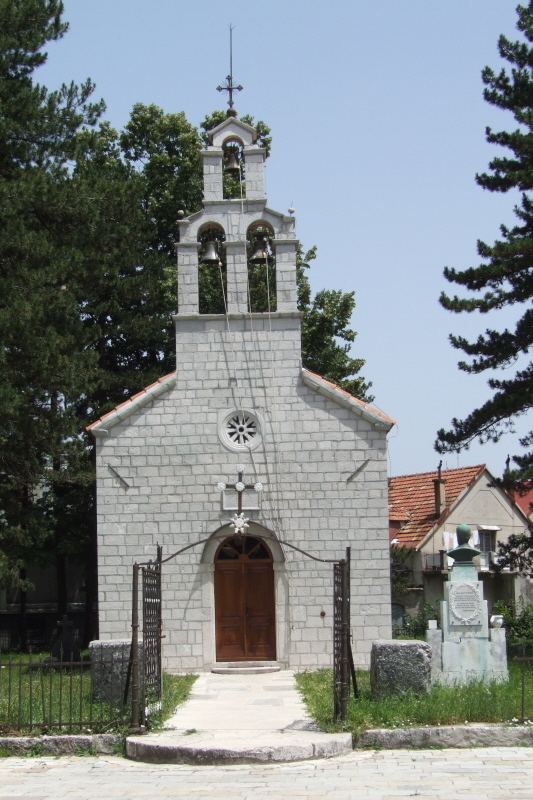Direction of façade West Province Zeta under the Crnojevići Affiliation Serbian Orthodox Church | Completed 1450 Municipality Cetinje | |
 | ||
State Serbian Despotate (modern-day Montenegro) Ecclesiastical or organizational status Metropolitanate of Montenegro and the Littoral Founder Vlachs who guarded the cattle of Ivan Crnojević Materials "plot"
"suvomeđa"
"klačena"
stone Address Baja Pivljanina, Cetinje 81250, Montenegro Similar Church of St Peter and Paul, Church of St Nicholas, Church of St Nicholas, Serbian Orthodox Church, Church of the Holy Venerabl | ||
The Vlah Church (Serbian: Влашка Црква) is a Serbian Orthodox church built in 1450 in the village, Donji Kraj (on Cetinje field), Zeta, Serbian Despotate (modern day Montenegro).
Contents
Stećci
The church was built around 1450 on the site of Bogumils' necropolis, which had around 150 stećci (monumental, ornate tombstones). Only two of them are preserved today. Originally they faced each other, and were recently reoriented to be side by side. According to some legends, recorded for the first time by Ljubomir Nenadović, the 17th-century military commander Bajo Pivljanin and his wife are buried beneath them. According to another legend and documentary evidence the stećci mark the graves of the founders of the church -- Ivan Borojević, born in Stari Vlah, and his wife Jelica.
Origin of the name
This church received its name for the Vlahs who guarded the cattle of Ivan Crnojević and built the church around 1450.
There are several additional theories about the origin of the term Vlah in the name of the church. Some authors believe that the term Vlahs in the name of this church is used as an exonym. Other theories connect the name of the church to Eastern Orthodox Christianity and population which were referred to as Vlahs or to demonym Vlahs (according to them this church was allegedly built by settlers from Stari Vlah).
Building materials
The church was initially made of "plot" (Serbian: плот), i.e. of sticks, switches and mud. It was rebuilt three times. First as "suvomeđa" (Serbian: сувомеђа), which means of stones without mortar; then of "klačena" (Serbian: клачена), which is stones with lime mortar; and finally, in 1864 the church received its current form. A guard rail around the church was built in 1897 using barrels of Ottoman rifles captured in 1858 during the Battle of Grahovac.
